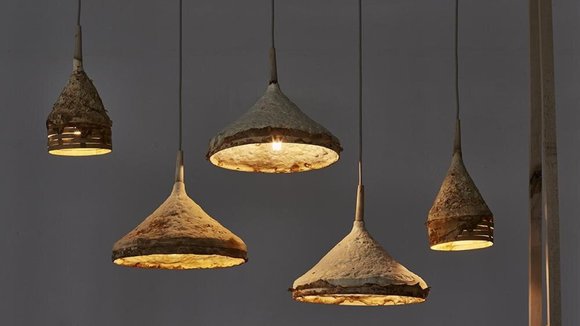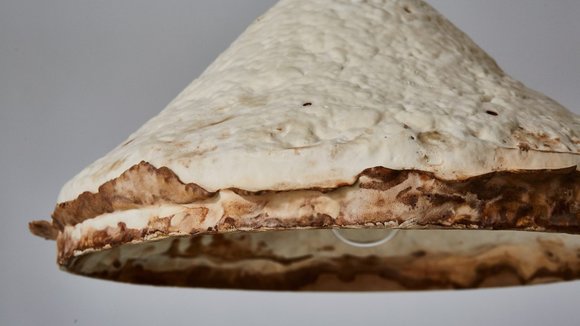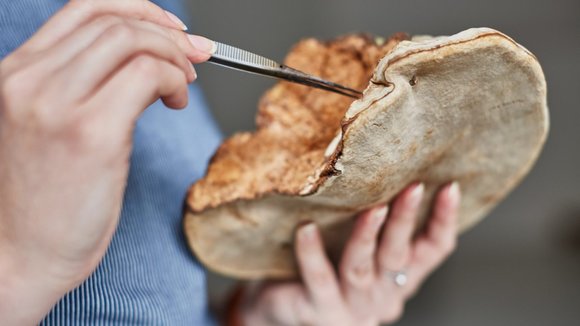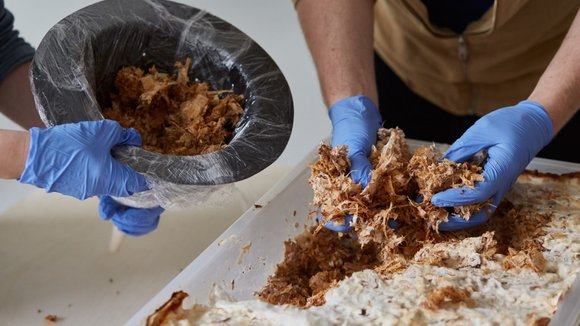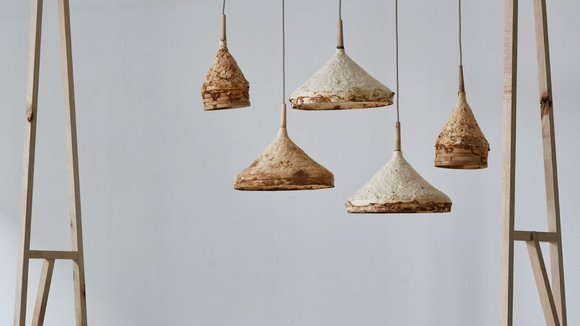1/7
These sustainable Mushroom lamps are actually grown into their funnel shapes, instead of being mass produced
With its oddly rustic design aesthetic, Sebastian Cox’s Mycelium pendant lamps aren’t made… they’re grown.
Mycelium, or the vegetative part of a mushroom, has found itself in the limelight for being a cheap, sustainable, and vegan alternative to suede and leather. If treated correctly, it looks and feels just like leather, offering a cruelty-free and biodegradable alternative that doesn’t have as much of a carbon footprint either. Teaming up with researcher Ninela Ivanova, British designer Sebastian Cox’s “Mycelium + Timber” examines the viability of mycelium as a potential material in commercial furniture design. The mycelium fibers are bound to scrap strips of willow wood, which provides the base and fodder for the fungus to grow. The result is the absolute antithesis of mass production. Designed in part by nature, each lamp is unique, has its own aesthetic, and is beautiful in its imperfections.
The lamps take anywhere between 4-12 weeks to ‘grow’. The scrap willow wood is first sourced from Cox’s own woodland, and cut into fine strips before being woven into shape and placed inside a mold. The mold is then filled with a fungus called fomes fomentarius, which was cultivated using more scrap strips of wood. Inside the mold, the mycelium and wood fuse together, creating a unique type of composite material. “In our workshop, we don’t use composite wood materials because I’ve never been quite satisfied with the binding agent holding the wood together,” Cox said in an interview with Dezeen. “As a result, I’ve always had a kind of fantasy interest in ‘reinventing’ a type of MDF and finding new ways to bind wood fibers into either sheets or mounded forms, ideally without glue.” The resulting lamp is removed from the mold when it’s fully grown and is supplied with 2.5m of oatmeal round fabric braided cable. The entire Mycelium lamp is sustainably produced and entirely compostable.
“It’s not just about the fungus, it’s about the marriage of the two materials,” adds Ninela Ivanova, a researcher who collaborated with Cox over this project. “These two materials have a natural relationship in the woodland, so let’s see how we can exploit that.” The duo plan to continue their collaboration and are working on releasing a full collection of mycelium and wood composite products in the near future.
发布于2021-08-17
设计师
Sebastian Cox with Ninela Ivanova
相关推荐
